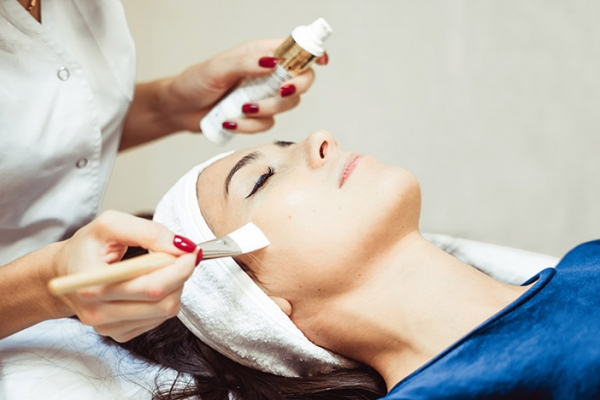What Should I Use To Exfoliate My Body? A Comprehensive Guide Inside
When striving for that coveted radiant skin, a common question comes to mind: what should I use to exfoliate my body? Exfoliation is a vital part of any beauty regimen. It not only removes dead skin cells but also promotes a healthy glow and enhances the absorption of moisturizers. As a beauty professional, being well-versed in exfoliation techniques and products can significantly impact your clients' skincare journeys.
This guide will explore various methods and products for body exfoliation, offering you an essential roadmap to choosing the right options for your clients. We'll discuss both physical and chemical exfoliants, their benefits, and how to apply them properly.

Understanding Exfoliation
Lets start by clarifying what exfoliation entails. In essence, exfoliation is the process of eliminating the outermost layer of dead skin cells from the skin's surface, unveiling smoother, more youthful skin underneath. There are two primary types of exfoliation: physical and chemical.
Physical Exfoliation
Physical exfoliation utilizes scrubs and tools that manually scrub away dead skin. Examples include:
- Body Scrubs These products often incorporate ingredients such as sugar, salt, or coffee grounds that help clear away dead cells when massaged onto the skin.
- Exfoliating Gloves Handy tools that provide gentle scrubbing while you shower.
- Brushes Body brushes stimulate circulation while aiding the exfoliation process.
Chemical Exfoliation
On the other hand, chemical exfoliation uses **acids or enzymes** to dissolve dead skin instead of physically scrubbing it away. Common ingredients include:
- AHAs (Alpha Hydroxy Acids) Ideal for dry skin, AHAs like glycolic acid help loosen the bonds between dead skin cells.
- BHAs (Beta Hydroxy Acids) Best suited for oily or acne-prone skin, salicylic acid penetrates deeply into pores to help clear debris.
- Enzymes Sourced from fruits like papaya or pineapple, enzymes gently exfoliate by breaking down dead skin cells.
What Makes a Great Exfoliant?
When choosing an exfoliant, several key factors should be taken into account:
- Skin Type Understanding if your client has oily, dry, sensitive, or combination skin will influence their exfoliation needs.
- Desired Result Selecting an exfoliant based on the client's goalsbe it brightening the skin, improving texture, or preventing breakouts.
- Ingredient Sensitivities Always confirm any allergic reactions or sensitivities to particular ingredients.
Timing Your Exfoliation
As a beauty expert, it's vital to guide your clients on how often they should exfoliate, which varies by skin type:
- Dry Skin Typically, once a week is enough to prevent irritation.
- Oily Skin Two to three times a week can help keep pores clear.
- Sensitive Skin These individuals may only need to exfoliate every two weeks or once a month.
It's important to keep an eye on your clients' skin reactions and adjust the exfoliation schedule as needed.
Top Exfoliating Products and Tools
Here are some effective products and tools that answer the question, what should I use to exfoliate my body:
- Physical Scrubs - Sugar scrubs, salt scrubs, and coffee scrubs are favorites for many clients due to their delightful scents and sensory experiences while exfoliating.
- Chemical Exfoliants - Look into serums featuring AHAs or BHAs that can be used at home for a consistent exfoliation routine.
- Body Brushes - Long-handled brushes make it easy to exfoliate hard-to-reach areas.
If you're interested in expanding your knowledge on body care, check out our article on body acne causes for additional insights.
How to Exfoliate Effectively
Employing the right techniques will ensure maximum benefits from your exfoliation routine:
- Apply Gentle Pressure Whether you're using a scrub or brush, always apply gentle pressure to avoid damaging the skin.
- Concentrate on Rough Areas Pay extra attention to tougher areas like elbows and knees.
- Rinse Thoroughly Always rinse off all exfoliating products to prevent irritation.
Troubleshooting Common Exfoliation Issues
Clients may sometimes experience challenges with exfoliation, such as irritation or breakouts. Heres how to advise them:
- Redness or Irritation Recommend they reduce the frequency of exfoliation or switch to a gentler product.
- Breakouts Suggest salicylic acid or products specifically crafted for acne-prone skin.
For further tips on skincare, take a look at this link on how to exfoliate.
FAQ Section
1. How often should I exfoliate my body?
The frequency of exfoliation is contingent upon skin type, yet generally, once a week is recommended for normal skin.
2. Can I use the same product for my face and body?
No, facial exfoliants are often more intense and formulated for the delicate skin of the face, whereas body exfoliants can be more abrasive.
3. What should I do if my skin feels irritated after exfoliating?
Cut back on the frequency of use and opt for a gentler exfoliant. Its also critical to keep the skin well-moisturized afterward.

Conclusion
In conclusion, identifying the answer to what should I use to exfoliate my body is vital for delivering an exceptional skincare experience for your clients. By understanding their skin type and unique requirements, you can effectively recommend suitable exfoliation techniques that enhance their skin health. For more valuable insights into exfoliation practices, visit this resource on Dove's exfoliation tips. Remember, knowledgeable beauticians create satisfied clients!

